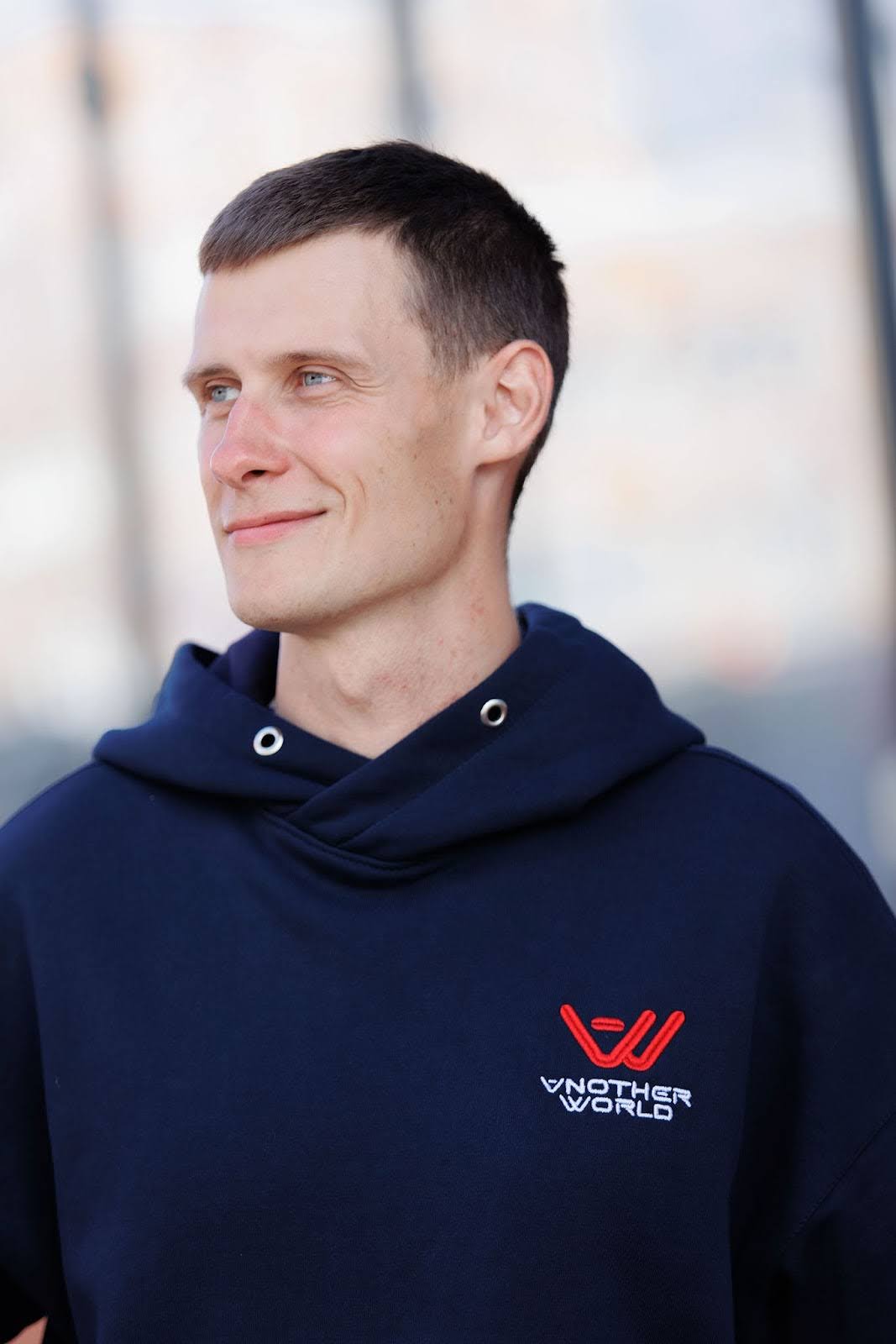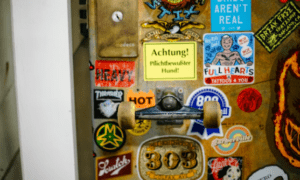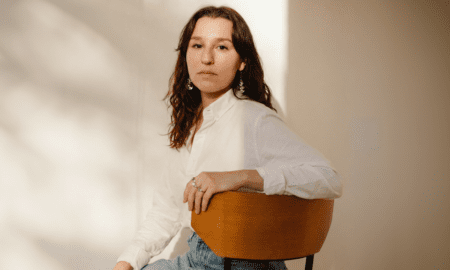Vasily Petrenko, founder of Another World, began his career in the entertainment industry through offline escape rooms—writing scripts, building physical sets, and creating turnkey experiences for operators across the globe. In 2016, he started exploring virtual reality as a potential new direction. At the time, the technology wasn’t quite ready: it lacked the reliability, immersion, and user comfort needed to support a viable business. Development was paused. But two years later, Petrenko saw a breakthrough. With advancements in free-roam VR, he realized it was possible to design multiplayer experiences that could scale—without massive overhead or complicated setup. In this interview, he shares how the first prototype came together, why poorly designed physical spaces can ruin a VR session, and how Another World builds infrastructure around content to make VR commercially sustainable.

How did your work in the entertainment industry begin—and how did it lead to VR?
It all started with offline escape rooms. In 2014, my partners and I opened our first location, just as the format was starting to gain momentum in Russia. We immediately saw the potential—the first project paid for itself within two months. We reinvested the revenue into new concepts, including the first comedy escape room on the market. We started innovating beyond traditional mechanics, moving past locks and keys into electronics and interactive elements. Eventually, we began offering our in-house tech and creative solutions to other operators.
Over time, we grew from a local business into a full-scale production company. At first, we were writing scripts for other teams. Then they started asking for puzzles, set design, and technical setups. The demand from external clients started matching—and sometimes exceeding—our own internal needs. In 2016, we got our first international order from the U.S., followed by projects across Europe, Australia, and Asia. These were independent operators, and we delivered fully built escape rooms that were ready to launch. By that point, we had completed several hundred projects worldwide.
That same year, we started looking into VR. We were curious whether it could be the next step, but we quickly hit some roadblocks. Most VR experiences back then were short-form and fairly basic. The hardware wasn’t very user-friendly, and it was hard to create longer, more immersive sessions without causing physical discomfort. We tested different setups—home-based, stationary—but ultimately decided to pause development. We didn’t think VR was ready to support the kind of deep, interactive experiences needed to build a sustainable business.
That changed in 2018. We met a team working on free-roam VR, and it completely reframed how we thought about the technology. Suddenly, it wasn’t just about the headset—it was about designing an experience around the player’s movement and spatial interaction. That was a turning point. We realized we could create something more meaningful: a format where both the narrative and gameplay are built around how people move and behave in a physical space.
So we got to work on our first prototype, drawing on everything we’d learned from the escape room industry. We knew how real-world environments affect immersion, and we understood the operational challenges of launching and running entertainment concepts across different countries. That foundation helped us build a VR experience that was technically sound, scalable, and—most importantly—actually fun to play.
What were the first steps in building your VR product?
At the time, most VR solutions were aimed at large-scale, high-budget projects. One system we looked into cost tens of millions—and the only way to see it was to travel abroad to a restricted-access showroom. That kind of model just wasn’t realistic for most operators.
We knew from the start we had to go in a different direction. Our focus was on building something scalable—both technically and financially.
We intentionally avoided expensive hardware. Instead of investing hundreds of thousands, we built a working prototype for $15,000. The script and interaction design were rooted in our escape room experience, with a strong emphasis on free movement, intuitive spatial logic, and player-driven gameplay. That early version proved our core idea: it was possible to build a high-quality system that could also scale.
Once the demo was ready, we brought it to an industry event in Nashville. One attendee—a representative from the entertainment sector—tried it and decided to purchase it right away. It was still a rough version: the story was incomplete, the mechanics weren’t final, the hardware was basic. But even in that form, the interest was strong.
That sale pushed us into full production. We completed the script, launched development, and adapted the system for real-world venues.
Initially, we imagined the game as an extra offering—something operators could add to existing escape rooms. But our early clients had a different vision. They began launching it as a standalone experience, with installations in shopping malls and dedicated spaces. That changed everything. We started designing the product to function independently—from both a technical and narrative perspective.
How did you scale the project and expand internationally?
Our existing escape room network became the launchpad. The first VR clients came from the same markets—U.S., Europe, Australia. We didn’t even build a separate expansion strategy at first; we just kept working with partners who already trusted us. By 2019, we had about ten.
But our mindset was global from day one. We weren’t aiming to dominate one city—we were focused on making the system replicable.
That meant standardizing everything: technical requirements, installation protocols, staff training. Today, we see ourselves not just as game developers, but as tech partners. We offer support across the board: from visual design and team onboarding to quality standards and operational checklists. That’s how we maintain consistency at scale.
What did your first launch reveal, and how did it influence the game mechanics?
The original product was a story-driven game for four players. It used backpack PCs, external sensors, and required manual calibration. The gear was heavy and hot, so players would tire quickly. Structurally, it was similar to an escape room: linear, with a fixed storyline and a clear end. It felt like a one-off experience—once you’d played, you’d seen it all.
But then something surprising happened. One player came back five times, each time with a different group of friends. The story hadn’t changed, but the experience did—depending on the group dynamic and how they interacted. That showed us something important: engagement wasn’t just about narrative, but also about social context and player behavior.
We leaned into that, and the next version introduced competitive mechanics—players facing off against each other. This shifted the structure entirely — the gameplay became open-ended, with outcomes driven by tactics and team dynamics. Suddenly, it was replayable. No two sessions were the same.
What technical challenges did you face in creating a comfortable VR experience, and how did you solve them?
We focused a lot on how people physically experience virtual space. One example was vertical movement. In our games, there are elevators—we needed to simulate vertical movement without making players nauseous. We tested dozens of variations—adjusting speed, visuals, and motion cues—until we got it right.
Navigation was another big challenge. We experimented with teleportation systems, refined calibration, and made sure players’ physical and virtual positions always matched. Avoiding collisions and keeping people inside the play zone was non-negotiable.
Behind the scenes, we built a robust backend. We developed custom interfaces, optimized device charging, and ensured smooth system management. These aren’t things the player notices—but they’re critical for consistency and safety.
We never chased spectacle for its own sake. Our focus was comfort, repeatability, and operational simplicity.
When did you first encounter limitations in your model, and how did that shape product development?
The challenges began when we tried to scale without a clear system in place. In the early stages, we were building one game after another without a defined structure. Development and scaling were happening side by side, and we couldn’t always predict how each location would implement the product.
Soon, we noticed that some partners struggled. For some, the physical setup was the issue; others weren’t sure how to present the experience. So we stepped in—helping with space design, offering branding assets, and building visual mockups. That’s when it clicked: the game alone wasn’t enough. Without the right environment and framing, the product just didn’t land.
Some lessons came the hard way. One partner opened in a basement with low ceilings and no renovation. Another launched in a plain office space with empty walls. Unsurprisingly, the customers didn’t come. That’s when we fully understood how much the physical setting shapes the experience—and started getting involved in the design of our partners’ spaces.
Over time, the model began to shift toward something closer to a franchise. We weren’t just delivering content—we were actively supporting launches, from layout to branding to operations. Both our revenue and that of our partners went straight back into development. We didn’t take profits early on, because we saw the business was still taking shape. In many ways, it still is—we’re growing with a startup mindset.
At what point did you realize the game needed to be supported by a broader ecosystem — and how did you approach that?
That shift is underway now, and we’re building in several directions at once.
First, infrastructure. We’re currently focused on several key areas. One is infrastructure: we’re building a digital ecosystem around the product with the goal of creating a consistent gameplay experience, regardless of location or country. To support that, we’re developing a player account system with game rankings, play history, loyalty features, and other tools. This gives venues a way to retain players and build engagement — bringing them back not just for a new title, but for a personalized experience they’re already connected to.
Second, we’re evolving the gameplay itself. We’re experimenting with different formats—from fast-paced action to layered arenas with complex layouts. These affect how players move, how they engage with each other, and how venues manage different flow and capacity scenarios. The goal is to strike the right balance between immersion, scalability, and operational control.
We’re also exploring partnerships with major VR studios and IP holders of well-known franchises. The idea is to combine one of the most technically robust platforms on the market with stories that already resonate with audiences.
Third, we’re expanding our content offering. There’s steady demand from family-oriented venues, so we’re adapting our games for younger audiences. At the same time, we’re exploring competitive formats inspired by esports. These are still early-stage, but the potential is big.
For us, the product isn’t just the game—it’s the full experience around it. From the first touchpoint to the return visit, everything plays a role. We’re building the system to support that whole journey.


































